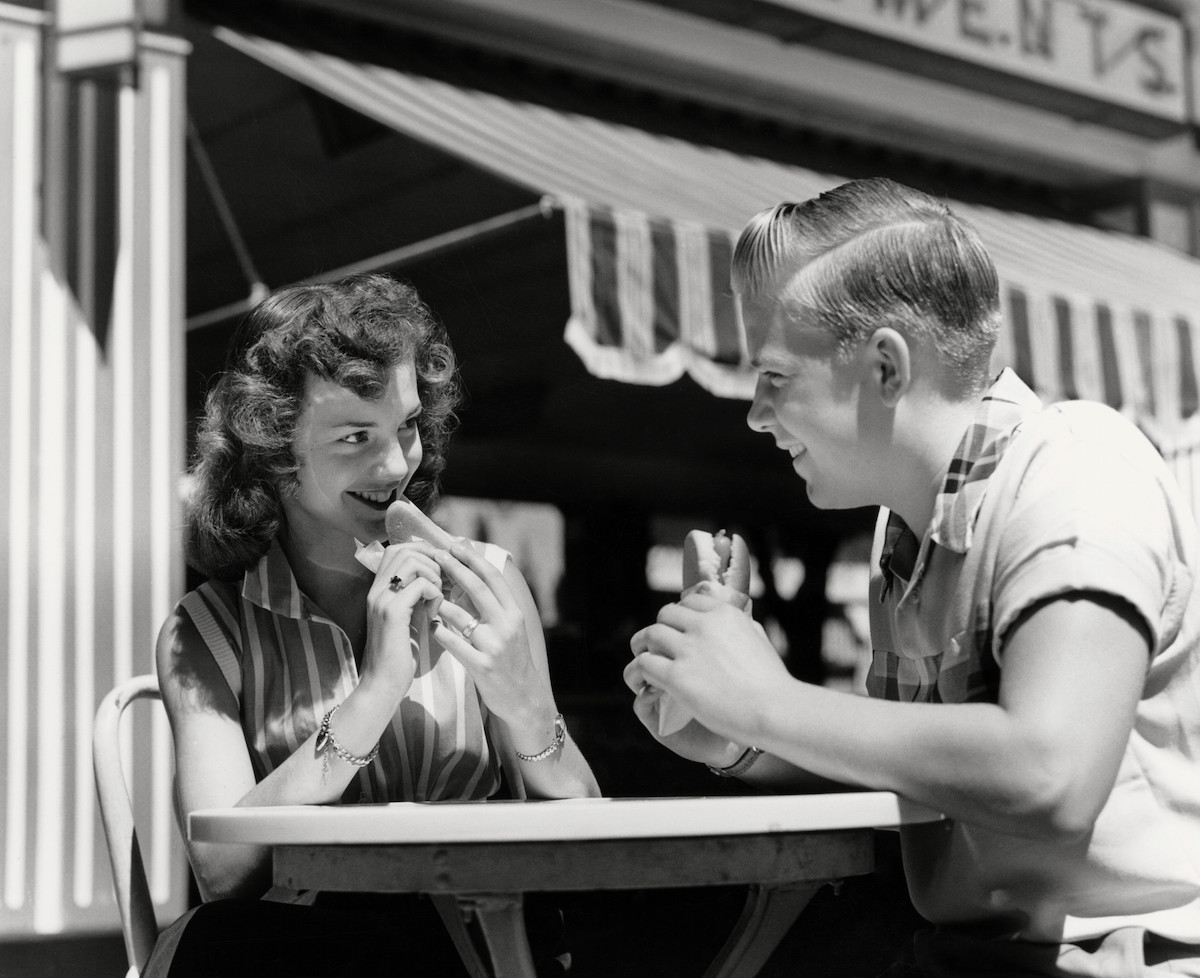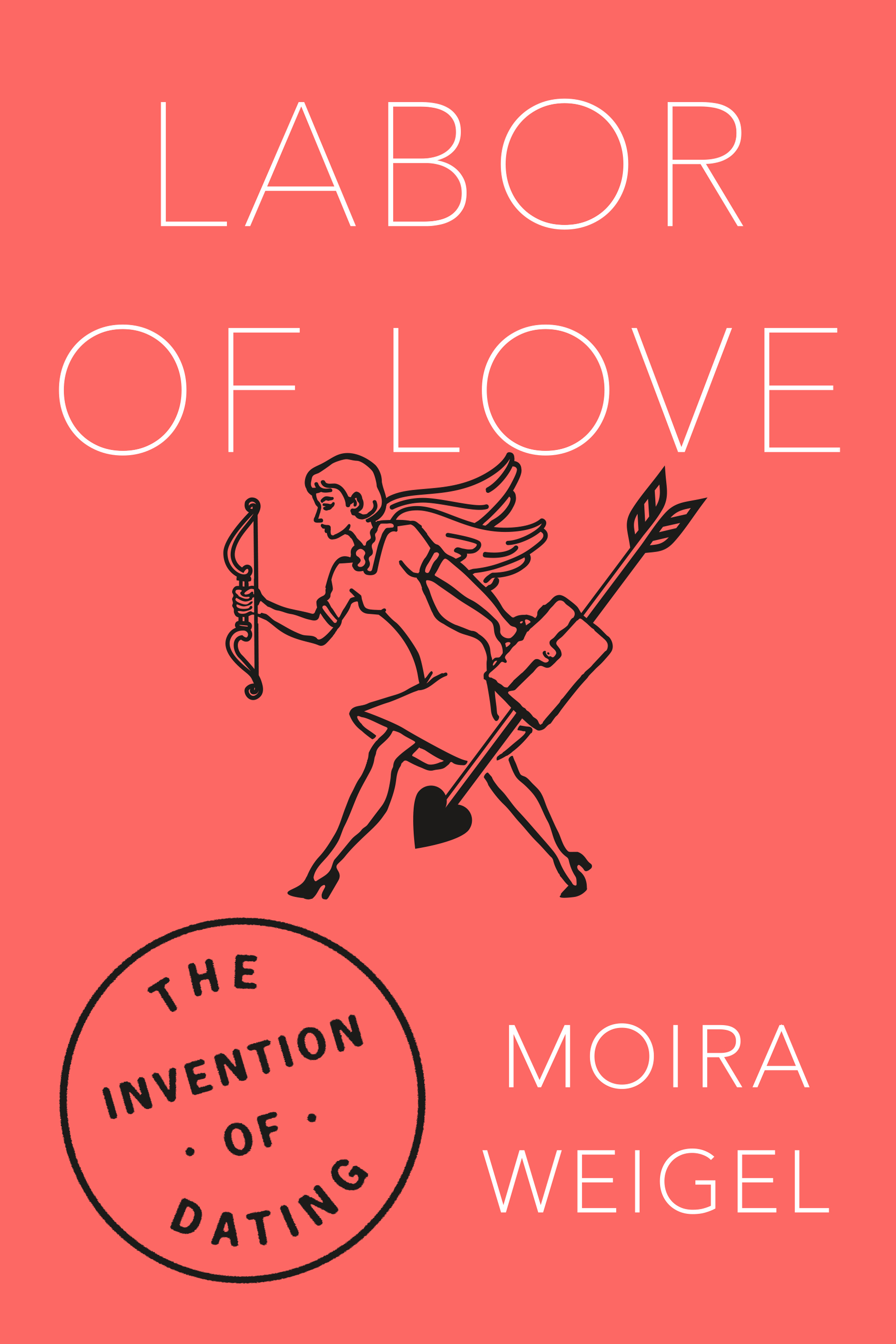
The turn of the millennium was not the first time that the American media had been transfixed by young people partying right up to the brink of economic crisis. In the 1920s, national newspapers and magazines reported extensively on the sexual escapades of high school and college students. Before hooking up, there was “petting,” and everyone was doing it.
In the 1940s and ’50s, Alfred Kinsey defined petting as “deliberately touching body parts above or below the waist” (thus distinguishing it from “necking,” or general body contact sustained while making out). In terms of the baseball metaphor, petting covered everything between first base and home plate.
“Mothers Complain That Modern Girls ‘Vamp’ Their Sons at Petting Parties,” The New York Times proclaimed in 1922. The Atlantic and The New Republic, the most prestigious magazines in America, regularly included features on “These Wild Young People” written by “one of them.”
At least one audience was guaranteed to take an interest: the petters’ parents. Between 1900 and 1930, a dramatic demographic shift changed family dynamics across the United States. Birthrates had been falling since 1800. By 1900, the average American woman was having only half as many children as she would have three generations earlier. Thanks to increased access to birth control, couples in the professional and managerial classes were stopping after their second or third kid. These parents did not have to exercise the kind of severe discipline that had been needed to keep order in households of nine or ten.
Get your history fix in one place: sign up for the weekly TIME History newsletter
Parents lavished affection on children and sought to help them flourish by discovering and developing their interests. The proliferation of advice literature about the new “emotional” family offers evidence of their commitment to this project. By the mid-1930s, 80 percent of women in professional families and nearly 70 percent of women in managerial families read at least one book on child rearing every year. The largest proportion read five. Fathers, too, began buying these books and attending events like teacher conferences.
These were the original helicopter parents. They sent their children to school longer and allowed them a great deal more leisure than they themselves had enjoyed. Ironically, the more they gave their children, the less influence they exerted over them. That role was taken over by their peers. As young people started spending less time with their families and more time with one another, they created their own culture. Petting was part of it, and helped prepare kids for a world that was changing faster than their parents could keep up with.
The process began in high school. By the 1920s, more than three-quarters of American teens attended. A study on child welfare commissioned by the White House in the early 1930s found that outside school activities, the average urban teen spent four nights per week engaging in unsupervised recreation with his or her friends. Their activities included dating—going to watch vaudeville shows or movies, going for ice cream or Coca-Colas (“coking”), going to dances organized by schools or thrown, impromptu, in a classmate’s basement, and simply piling into a car together and cruising around.
Parents and schools tried to impose guidelines on these activities. My grandfather, who was a young dater in the 1930s, recalls a schoolteacher admonishing him and his classmates that if they let girls sit in their laps while “joyriding,” they had to be sure “to keep at least a magazine between them.”
F. Scott Fitzgerald warned that “none of the Victorian mothers . . . had any idea how casually their daughters were accustomed to be kissed.” A quick glance at the tables of contents of various editions of Emily Post’s Etiquette books captures how quickly the shift happened. The 1922 edition contained a chapter on “The Chaperon and Other Conventions”; by 1927 it had been retitled “The Vanishing Chaperone and Other New Conventions”; and by 1937, “The Vanished Chaperone and Other Lost Conventions.”
That certain conventions had disappeared did not mean that courtship had devolved into a free-for-all. Rather, having been brought together in schools, young people were developing their own codes. Peer pressure replaced parental discipline.
Read More: The Invention of Teenagers: LIFE and the Triumph of Youth Culture
In 1925, Benjamin Lindsey attempted to explain the changes in attitude that he saw taking place. A judge from Denver, Lindsey had spent decades working in the juvenile justice system. Many of the cases that he describes in The Revolt of Modern Youth start with a date gone awry. Take, for instance, fifteen-year-old Helen, who had made plans for a friend of a friend to pick her up at school one afternoon and give her a ride in his new automobile. Though she explicitly stated that she would not let him “make love to” her, she had agreed to give him a kiss.
“That’s a fair price,” she testified. When Helen’s high school principal intercepted her date plans, she had the young man with the car charged with attempted white slave trafficking. But Judge Lindsey marveled at the “strenuous, strict, and self-denying conventions of the strange Flapper-Flipper world she lived in.”
Countless cases showed him that Helen was in the new mainstream. “Of all the youth who go to parties, attend dances, and ride together in automobiles, more than 90 percent indulge in hugging and kissing,” Lindsey reported. “This does not mean that every girl lets any boy hug and kiss her, but that she is hugged and kissed.”
Lindsey concluded that by the end of high school, 15 to 25 percent of those “who begin with the hugging and kissing eventually ‘go the limit.’” The rate among boys was roughly the same as it had been in the late nineteenth century. But whereas previously most middle-class young men said they had their first sexual experiences in the red-light districts, now they petted their female peers on dates. Even if they refused to go “all the way,” “nice girls” were no longer insulted by being asked.
In light of these facts, Lindsey argued that it was imperative that parents and educators discard their “wet dishrag morality” and speak openly with children. However, the real revelation was that school, in itself, constituted a kind of sex education. The ways the boys and girls dating culture that they developed after class, became a key part of what they went there to learn. In the relatively sheltered atmosphere that the school provided, students were willing to take the kinds of risks that only Charity Girls had ventured in dive bars or on boardwalks. When students left for college, they moved into the world of peers and immersed themselves in their rituals full-time.

Excerpted from LABOR OF LOVE: The Invention of Dating by Moira Weigel. Published by Farrar, Straus and Giroux, LLC. Copyright © 2016 by Moira Weigel. All rights reserved.
More Must-Reads from TIME
- Inside Elon Musk’s War on Washington
- Meet the 2025 Women of the Year
- The Harsh Truth About Disability Inclusion
- Why Do More Young Adults Have Cancer?
- Colman Domingo Leads With Radical Love
- How to Get Better at Doing Things Alone
- Cecily Strong on Goober the Clown
- Column: The Rise of America’s Broligarchy
Contact us at letters@time.com